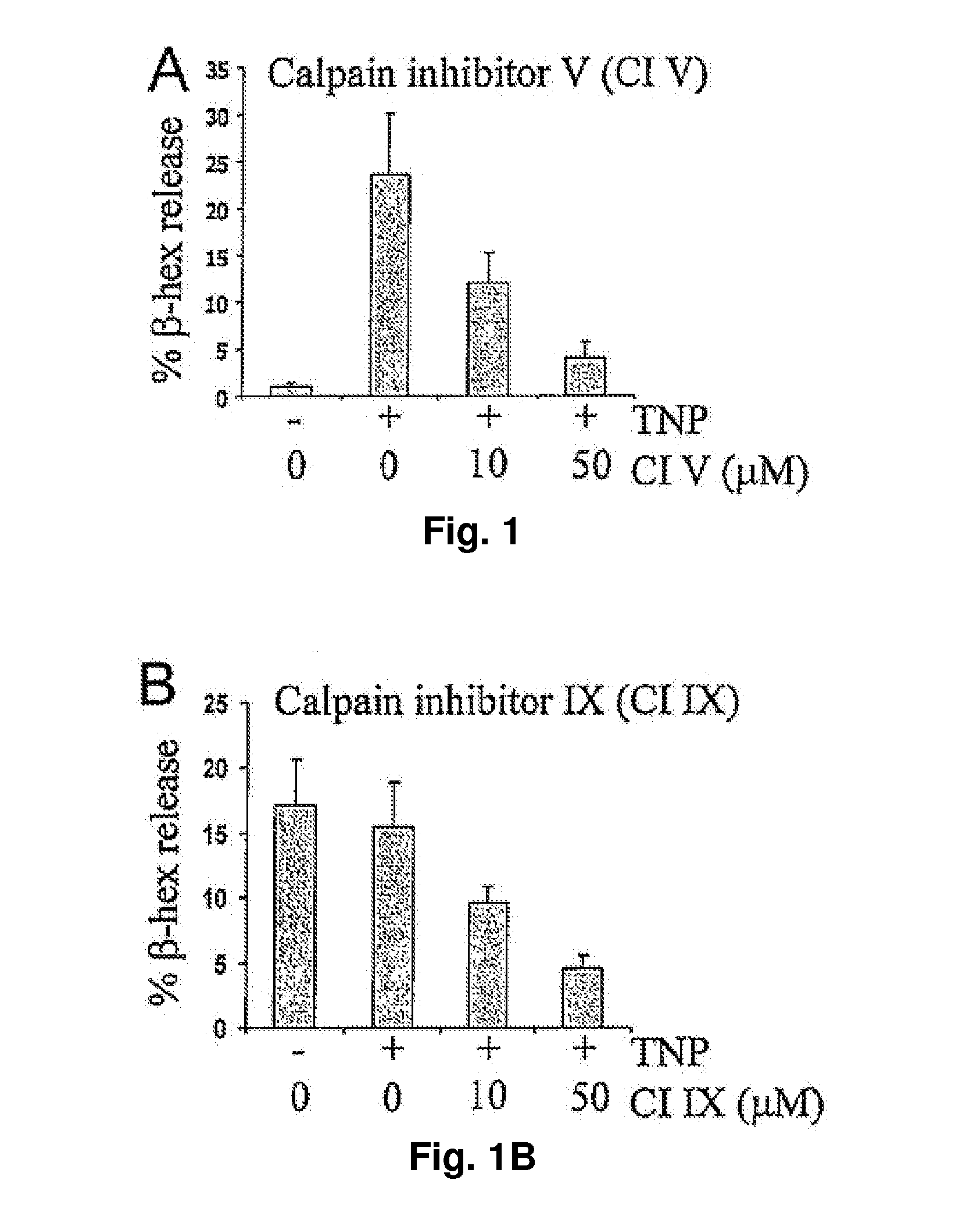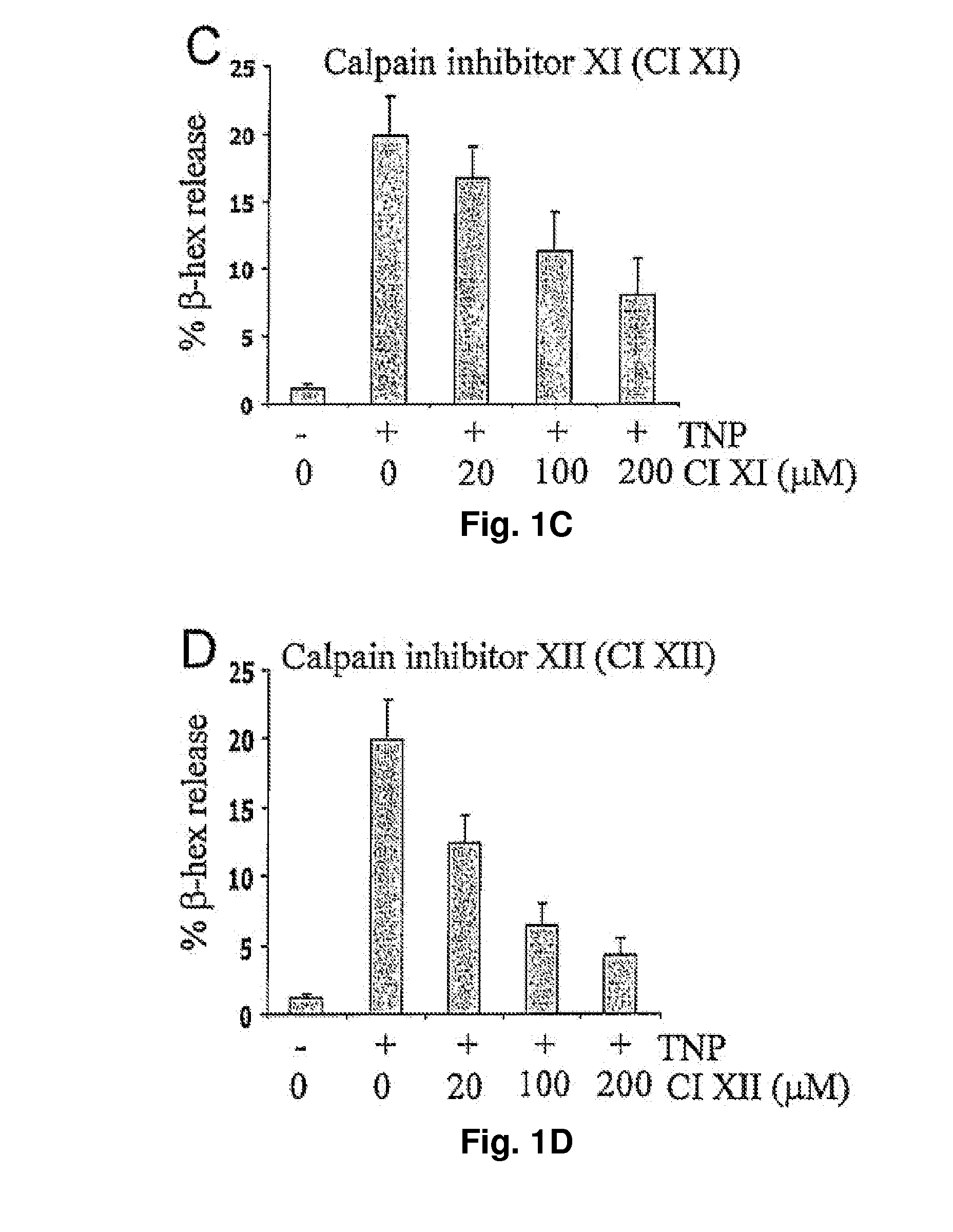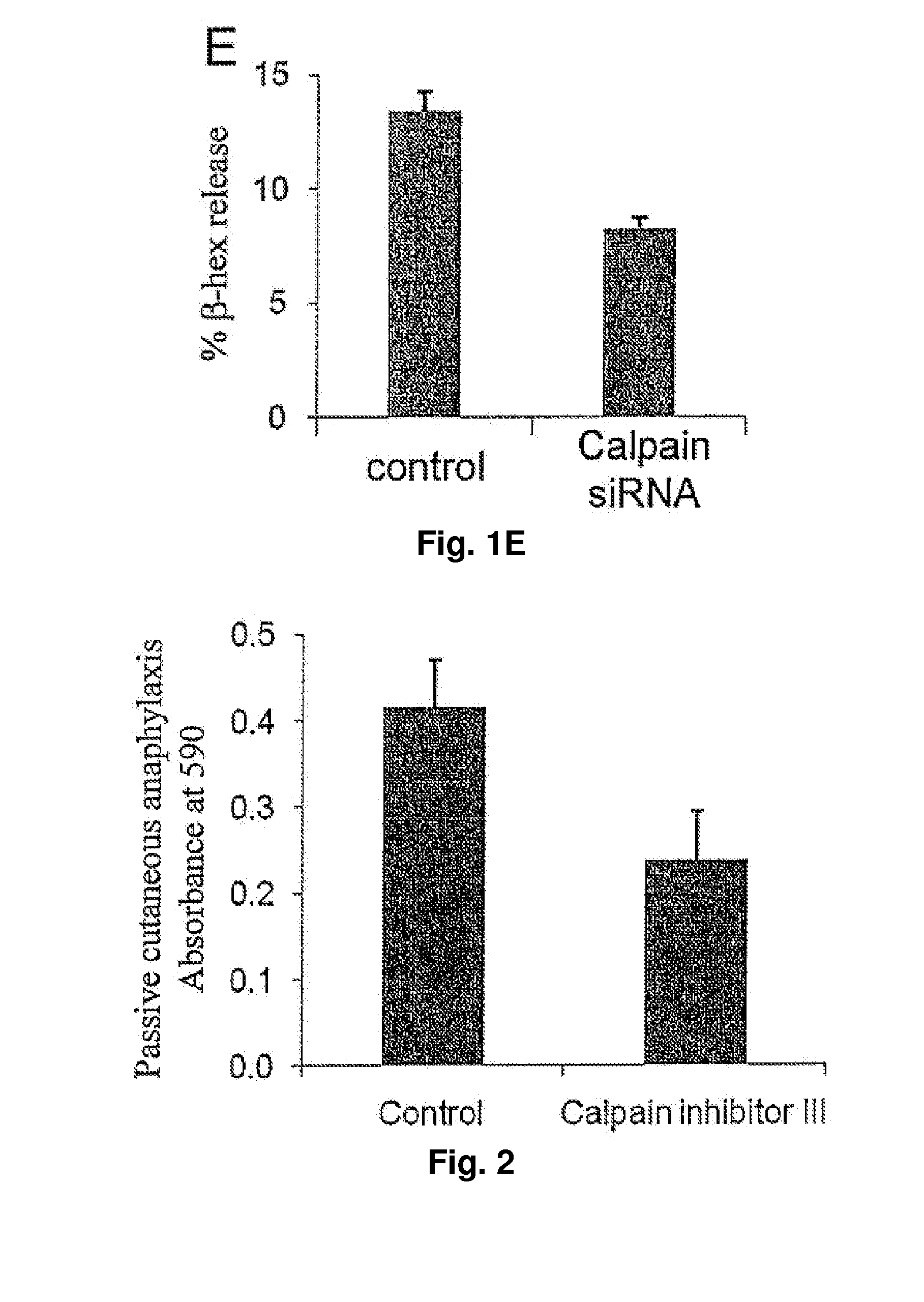Inhibition of calpain reduces allergic inflammation
a technology of calpain and enzymatic activity, which is applied in the field of allergy and/or inflammatory diseases, can solve the problems of reducing affecting the normal function of the immune system, and affecting the immune system, so as to reduce the degranulation of mast cells, reduce the enzymatic activity of calpain, and alleviate the allergy
- Summary
- Abstract
- Description
- Claims
- Application Information
AI Technical Summary
Benefits of technology
Problems solved by technology
Method used
Image
Examples
example 1
[0051]After sensitization with IgE, Mouse bone marrow-derived mast cells (BMMC) were resuspended in Hepes tyrode buffer at a density of 0.5 million cells / ml and a total of 200 μl per test was aliquoted to Eppendorf tubes. Cells were incubated with calpain inhibitors (FIG. 1A, calpain inhibitor V; FIG. 1B, calpain inhibitor IX; FIG. 1C, calpain inhibitor XI; FIG. 1D, calpain inhibitor XII; FIG. 1E, calpain knockdown with siRNA) for 1 h at 37° C. and subsequently, further stimulated with TNP-BSA (10 ng / ml) for 20 min. β-Hexosaminidase, as a measure of degranulation, was measured in both supernatant and pellet fractions using a previously reported method. (Schwartz et al. J. Immunol. 123, 1445-50 (1979)) Briefly, 50 μl of each sample was incubated with 50 μl of 1 mM ρ-nitrophenyl-N-acetyl-β-D-glucosaminide (Sigma) dissolved in 0.1 M citrate buffer, pH 5, in a 96-well microtiter plate at 37° C. for 1 h. The reaction was stopped with 200...
example 2
Passive Cutaneous Anaphylaxis
[0053]To examine the role of calpain in FcεRI-mediated passive cutaneous anaphylaxis in mice, dorsal sides of the ears of Balb / c mice were injected intradermally with 20 ng anti-DNP IgE (both left ears) in a 20 μl volume using a 30-gauge needle. After 24 h mice in the treatment group received 0.965 mg / mouse of calpain inhibitor III via intraperitoneal injection. Control group received diluent dimethyl sulfoxide (DMSO) only. One hour later mice in both treatment and control groups were challenged with 100 μg Ag (DNPBSA) in 200 μl 0.5% Evans blue dye i.v. Mice were sacrificed 30 min after the Ag challenge. For quantitation of Evans blue dye extravasation as a measure of anaphylaxis associated vascular hyperpermeability, 8-mm skin specimens were removed from the ears of mice, minced in 2 ml formamide, and incubated at 80° C. for 2 h in water bath to extract the dye. The absorbance of the extracted dye was read at 620 nm.
[0054]These results indicate that spe...
example 3
Cytokine Release Experiments
[0055]Following overnight sensitization and extensive washing, BMMC were re-suspended in RPMI 1640 supplemented with 10% FBS at a density of 0.5 million cells / ml and a total volume of 500 μl per test was aliquoted to Eppendorf tubes. An inhibitor (calpain inhibitor V) was added and samples were incubated for further 20-24 hr at 37° C. in a sterilized, humidified atmosphere containing 5% CO2. Supernatants were then harvested and frozen for the subsequent determination of TNF (FIG. 3A) and IL-6 (FIG. 3B) concentration by ELISA according to manufacturer's protocol.
[0056]These results indicate that calpain specific inhibitors are effective at reducing inflammatory mediator release by mast cells, providing a means for reducing these effects during allergy and / or inflammation disorders.
PUM
| Property | Measurement | Unit |
|---|---|---|
| Level | aaaaa | aaaaa |
Abstract
Description
Claims
Application Information
 Login to View More
Login to View More - R&D
- Intellectual Property
- Life Sciences
- Materials
- Tech Scout
- Unparalleled Data Quality
- Higher Quality Content
- 60% Fewer Hallucinations
Browse by: Latest US Patents, China's latest patents, Technical Efficacy Thesaurus, Application Domain, Technology Topic, Popular Technical Reports.
© 2025 PatSnap. All rights reserved.Legal|Privacy policy|Modern Slavery Act Transparency Statement|Sitemap|About US| Contact US: help@patsnap.com



